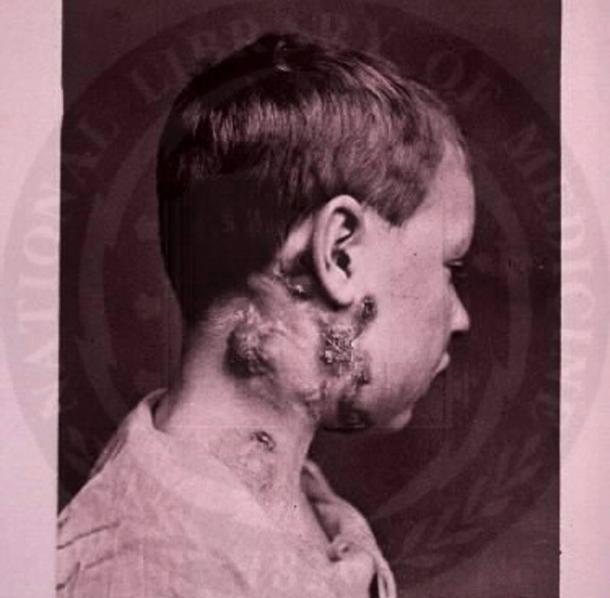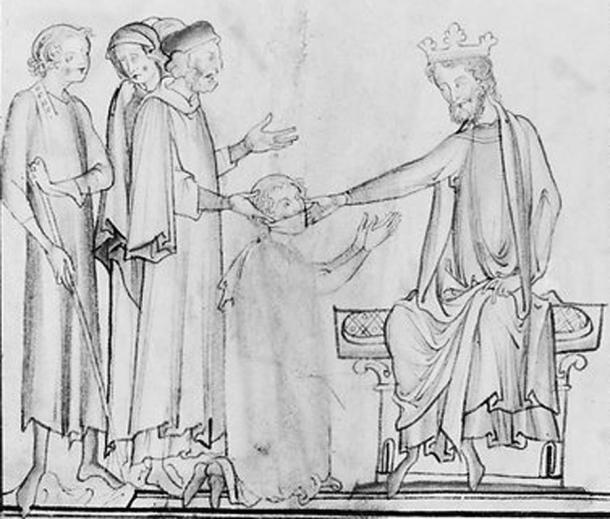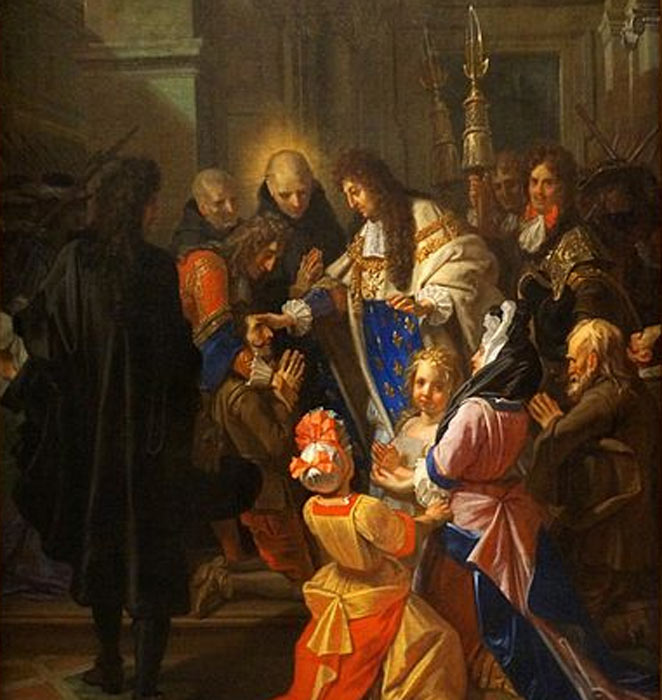
The Royal Touch: Could Medieval Monarchs Heal You With Their Hands?
For centuries, a commonality across the various monarchies of the world was a direct association between the ruler and a higher power. Kings and queens were seen either as God’s Chosen One or, in some cultures, they were seen as God themselves.
In the Western world, kings were commonly described as having “divine” rights and powers. The divine right was also called God’s mandate in some cultures. This was a combined political and religious doctrine, that was intended political legitimacy to a monarchy.
Otherwise, where would one person find the authority to rule an entire population? Unless people believed that the king was special and had God by their side, this was impossible.
To receive the divine right, it was believed that the king’s soul was given to God when he was crowned. This meant that every time the king wore the crown, he would be blessed with divine abilities.
People believed that, with God’s blessing, the king would rule justly and well, and use these powers for the benefit of his subjects. And there were other, more tangible manifestations of these divine powers as well.
Many monarchs were seen as God incarnate and built a reputation as the possessor of supernatural abilities One such power that European kings came to associated with was the Royal Touch.
What is the Royal Touch?
The Royal Touch is also called the King’s Touch and was essentially a blessing, akin to a laying on of hands. It was practiced by English and French monarchs of the Middle Ages. Subjects of any class could request to meet the king and receive the Royal Touch.
It was believed that the king, with a direct link to God, also had healing powers, and that the Royal Touch had the power to cure diseases or maladies. Many sick and enfeebled people would also petition the king for the Royal Touch in the hope of being cured.
Who got the Royal Touch?
The Royal Touch was first given to people who were suffering from scrofula. In fact, so many people believed that the Royal Touch could cure scrofula that the disease was also called the “king’s evil.”

A patient suffering from scrofula (Unknown Author / Public Domain)
People would also petition the king, hoping for a cure from fevers, rheumatism, blindness, and goiter. The belief that the kings had divine healing powers, with God working through his touch to cure the sick, was strong in the western world.
More practically, the Royal Touch was a useful piece of monarchy propaganda. The king could both claim manifest evidence of his divine powers, while painting a compassionate, benevolent, and selfless picture of himself in front of his subjects. For the English and French monarchies, this was a useful way to keep order.
Another reason why people believed that the king had healing powers is that the king himself was seldom seen as ailing. The king always seemed to stay healthy and capable, or at least appeared as a carefully painted picture of good health. Thus, people believed that the King, himself automatically benefiting from the Royal Touch, could also bestow good health upon them.
Instances of The King’s Touch
One of the first historical accounts of the Royal Touch being delivered dates back to 11th century England, where the Anglo-Saxon King Edward the Confessor started the practice. He would famously cure scrofula by simply touching the patient’s hands and putting a stamp on their neck.

Edward the Confessor applies the Royal Touch (Wellcome Trust / CC BY 4.0)
The people were reported as often being cured instantaneously. Given this, the King’s Touch was seen as nothing short of a miracle, and markedly improved King Edward’s authority. But it didn’t come for free: cured patients were encouraged to make a penny donation to the royal coffers after receiving the Touch.
The Royal Touch and King Edward the Confessor’s healing powers were so well known that, during the reign of Elizabeth I, Shakespeare referenced them in his play Macbeth. This is unsurprising however, as Elizabeth’s grandfather, Henry VII, had reintroduced the concept in the late 15th century.
Henry’s Royal Touch was an elaborate affair involving visible acts of charity to the poor. The King would distribute gold coins called "Angels” with the Archangel Michael depicted on them, defeating a dragon. The coin was intended to be a symbolic bestowing of the power to fight and overcome disease.
These angelic coins would be given to the people after they received the Royal Touch, to be worn around their necks as a talisman, providing them with continued healing powers. Henry VII would also hold prayer sessions, where healing prayers and extracts from the Gospels of Mark and John were read.
But the French went even further. The King’s Touch was said to be so effective in France that King Louis XIV is recorded to have touched 1,600 people on a single Easter Sunday. It had become tradition for kings to administer the Royal Touch on certain holy days.

Louis XIV applies the Royal Touch (G.Garitan / CC BY-SA 4.0)
It is not surprising that the authoritarian French monarchy was attracted to the concept, and the chance to paint the king as divinely different and special. Many people believed that French Monarchs possessed supernatural abilities. Moreover, people would even believe that dead French kings could even apply healing magic from beyond the grave.
Excellent PR
While one could give a benefit of the doubt that some kings did have great compassion for their subjects, they could obviously not heal them with their hands. The diseases that the Royal Touch could cure were carefully chosen to offer limited risk of exposure to the king. In addition, scrofula was typically something that a sufferer would eventually heal from anyway.
But, if you are one man trying to control hundreds of thousands, it certainly benefits you to be able to demonstrate that you have been chosen by God.
Top Image: Queen Mary applies the Royal Touch to cure scrofula. Source: M S Lapthorn / Public Domain.
By Bipin Dimri
References
The Curious History of the Miraculous Healing Royal Touch. Available at: https://mysteriousuniverse.org/2021/06/the-curious-history-of-the-miraculous-healing-royal-touch/
The Ritual of Royal Healing in Early Modern England. Available at: https://www.jstor.org/stable/42611999















